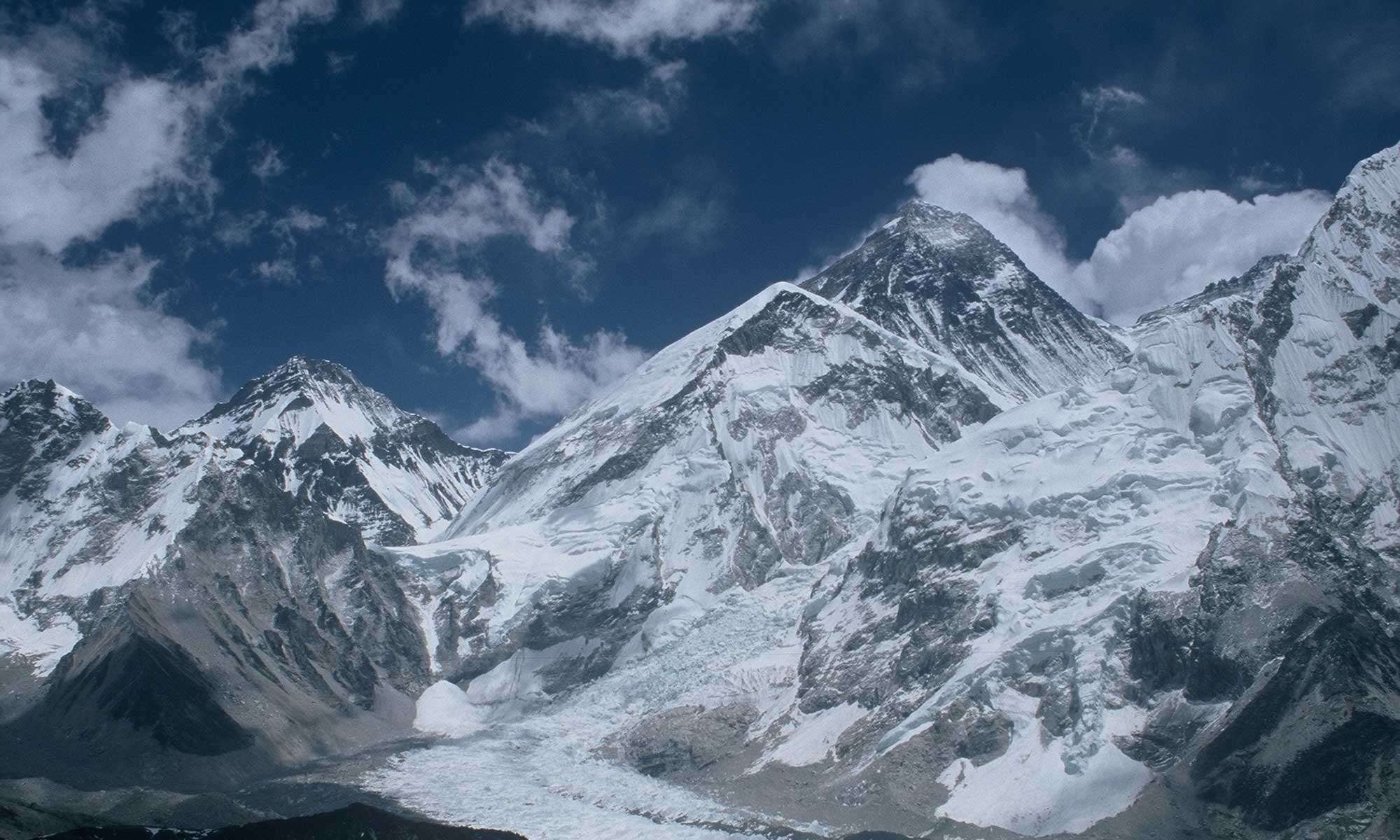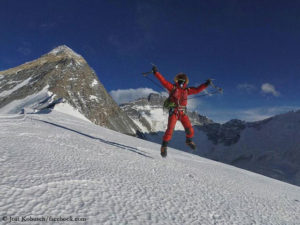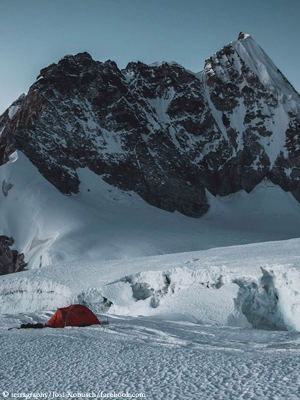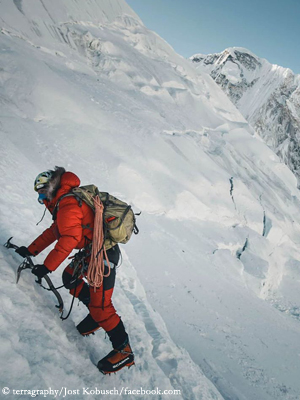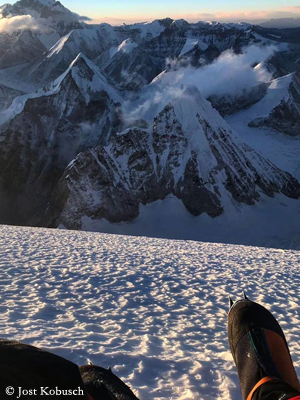Jost Kobusch also designs the end of his Everest winter expedition “deliberately decelerated”, as he says. The 27-year-old mountaineer, who has already been in Nepal since mid-September, will return to Germany only in a week. Jost had attempted to climb Mount Everest solo and without bottled oxygen, on the ambitious, rarely climbed route over the Lho La, a 6000-meter-high pass between Nepal and Tibet, and the West Ridge. He had climbed up to an altitude of 7,366 meters. I reached Kobusch by phone in a hotel in Kathmandu.
Jost, how satisfied are you with the result of your Everest winter expedition?
I am quite happy. My goal was to reach 7,200 meters. I managed that, learned a lot, and I am very grateful for this experience.
What exactly did you learn?
First of all, I got to know the whole microclimate on Everest, which you have to prepare for there: the temperatures, the wind, the precipitation. And I also got to know the route very well. I know where it works, where the special challenges are. And I’ve learned a few tricks to stay operational at these temperatures, how I can function as an athlete under these conditions. It was my first eight-thousander winter expedition, so there was a steep learning curve.
You said beforehand that you wanted to check whether your project was even possible in the planned form. What is your conclusion?
I would say it is possible.
What was the bigger challenge for you: being on your own or the extreme weather conditions?
For me the wind was the biggest challenge. It is incredibly strong and requires a different approach: Where do I pitch up the camp, how do I fasten it? You don’t usually experience so much wind. By comparison, spring is almost like a beach holiday.
On the West Ridge and already on the West Shoulder you are particularly exposed to the wind. Do you have to check the weather forecast particularly thoroughly to avoid being blown off the mountain?
Yes, you have to look where the peaks are in the wind curve. At that time you should be in base camp. There are some places up there where you can bury the tent. Together with the manufacturer Ferrino, I have developed a prototype tent with four poles, which is particularly stable and specially adapted to these conditions. But I have to admit that for the first time on an expedition I really used all available lines to tighten the tent. (laughs)
Alex Txikon, who was en route on the Everest normal route for the third time in winter, reported on increasingly noticeable effects of climate change. How did you experience this?
I have no comparison, but intuitively I would fully agree with him. One of the glaciers in the region had shrunk considerably compared to my visit four years ago. The large seracs in the upper area were simply no longer there. In the middle of winter there were warm days when everything melted and a stream flowed through the base camp.
How did you experience the climbing difficulties on your route up to the West Shoulder?
I would rate the key passage with difficulty 6b. That was quite interesting. I climbed rope solo, in a down suit, with gloves that I could unfold so that only my fingers were looking out and with rather light mountaineering boots, plus rope solo. I have to admit that I had some queasy feelings in between, especially since there was no information about the lower part of the route. This was mentally a challenge. Also to know that a fall would not end so pleasantly. But after I had overcome these first rock climbing sections, things went smoother. The higher I got on the West Shoulder, the safer I felt, because technically it became easier and easier.
Was this also a consequence of your months of acclimatization? I think in the past years hardly anyone has stayed in Nepal as long as you have before an expedition.
I think without this good acclimatization I would not have been able to climb a 6b route in these conditions. Nevertheless: If you jam your fingers into a crack, it only takes about a minute until they become numb. That was a real challenge.
You had problems with your left foot. How much did that hinder you?
One morning after descending Lho La, I felt a sharp pain in my foot. I couldn’t take the weight on it anymore, just limping around the base camp with a trekking pole like a grandpa. That lasted three days. Mentally I was at the point where I was ready to go home because of it. Then I phoned my physiotherapist and taped my foot according to his instructions. At first I still had pain, but then the discomfort eased under strain and it went better than I thought. The foot is still a bit stiff, but I think it will recover completely.
You have climbed up to 7,366 meters on the West Shoulder. Did you turn back at this point because you had reached your previously set goal of 7,200 meters or was it a gut feeling?
It was more like intuition. This spot is the beginning of the upper West Ridge. When you are up there, you have to descend a little bit first. It’s like a small summit with a fantastic view. I knew I was too late. I should have reached this point at the beginning of February, then spent a night at 7,500 or better 8,000 meters, descended again, charged my batteries again and then made the summit attempt. This night at very high altitude was essential for me. So I knew that even if I went on now, I would not try to reach the summit, because this very condition was not met. I did a risk analysis and my intuition told me: Jost, you will go home now.
You have put a lot of time, money and energy into this project. How keen are you on returning to Everest?
I won’t come back next winter, even if I could afford to. It would just be too soon. I need a little change now. That’s why I’m going to spend the next winter in Alaska and then return to Everest the following winter. I know already: I’ll be super excited to come back then. And I will invest a lot of time and energy again.
